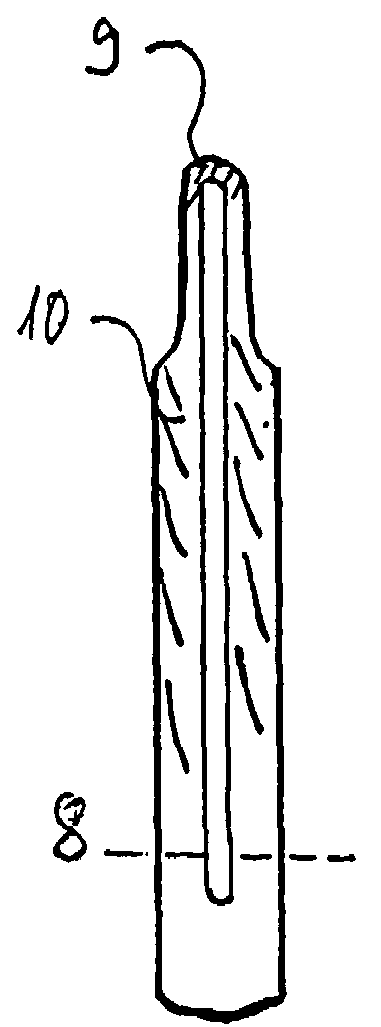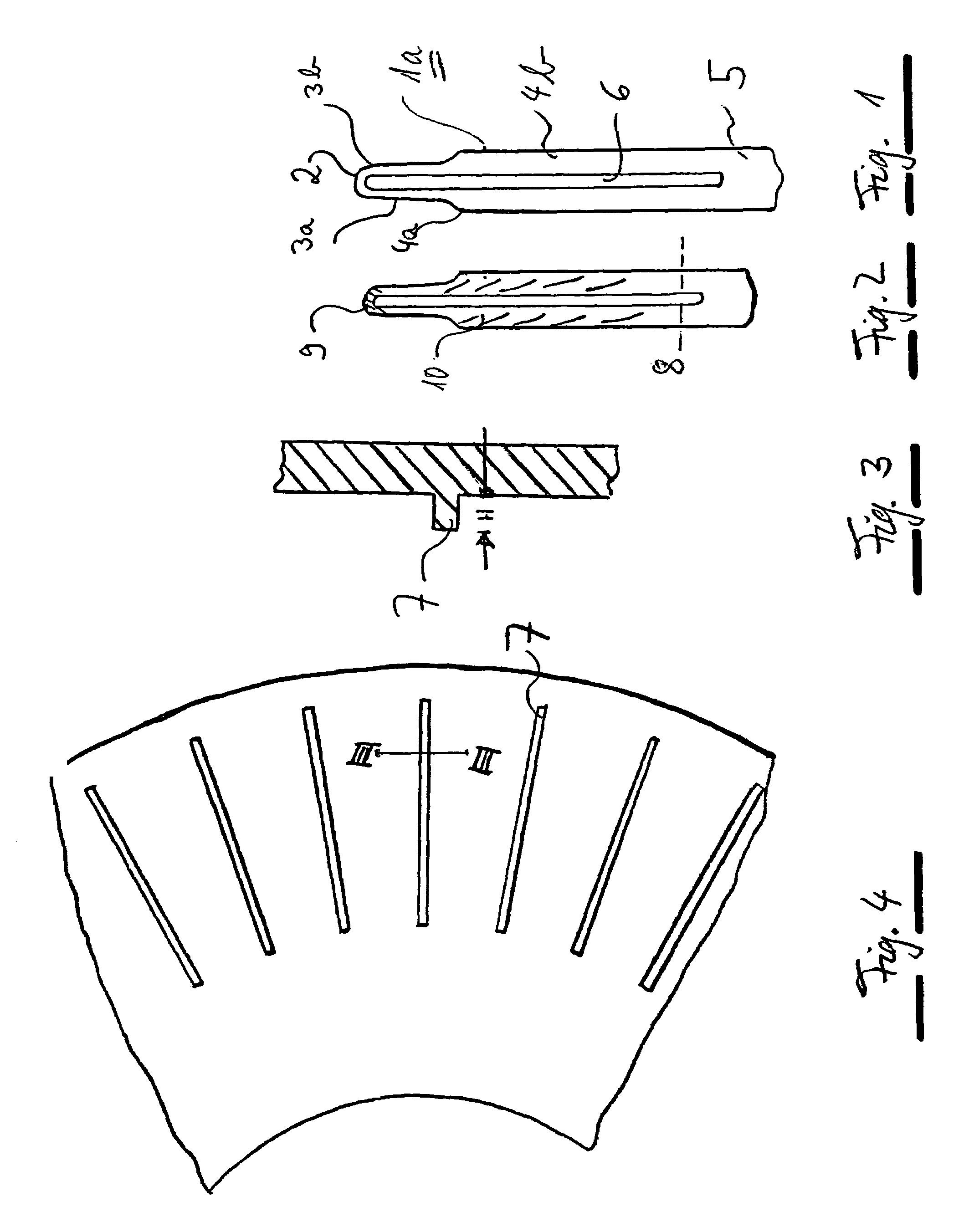Silcon carbide element
a silicon carbide and heating element technology, applied in the direction of non-adjustable resistors, combustion processes, combustion ignition, etc., can solve the problems of low mechanical loadability, insufficient densification, undesirable grain growth, etc., and achieve the effect of increasing the specific resistance, increasing the resistance per length, and increasing the specific resistan
- Summary
- Abstract
- Description
- Claims
- Application Information
AI Technical Summary
Benefits of technology
Problems solved by technology
Method used
Image
Examples
Embodiment Construction
[0028]FIG. 1 shows an initial blank made of silicon carbide ceramic, which may be produced, for example, according to the method described in German Patent No. 42 33 626. In this context, however, deviating from the method described there, a silicon carbide starting material is used which has a low proportion of aluminum doping.
[0029]The slip produced from the aluminum-containing silicon carbide starting material is formed into an initial blank 1a. This initial blank 1a has a rounded tip 2 which is connected via two thin shanks 3a, 3b to a base element made of wider shanks 4a, 4b. The two shanks 4a, 4b are connected to each other in a region 5 at the opposite end of tip 2. A wide slot 6 extends between shanks 4a, 4b, 3a, 3b from tip 2 to lower connecting region 5.
[0030]In a practical exemplary embodiment, the initial blank has a thickness of about 1.5 mm and a length of about 65 mm.
[0031]The silicon carbide blank of FIG. 1 is mounted upon a round carrier made of graphite which has s...
PUM
| Property | Measurement | Unit |
|---|---|---|
| Temperature | aaaaa | aaaaa |
| Temperature | aaaaa | aaaaa |
| Fraction | aaaaa | aaaaa |
Abstract
Description
Claims
Application Information
 Login to View More
Login to View More - R&D
- Intellectual Property
- Life Sciences
- Materials
- Tech Scout
- Unparalleled Data Quality
- Higher Quality Content
- 60% Fewer Hallucinations
Browse by: Latest US Patents, China's latest patents, Technical Efficacy Thesaurus, Application Domain, Technology Topic, Popular Technical Reports.
© 2025 PatSnap. All rights reserved.Legal|Privacy policy|Modern Slavery Act Transparency Statement|Sitemap|About US| Contact US: help@patsnap.com



